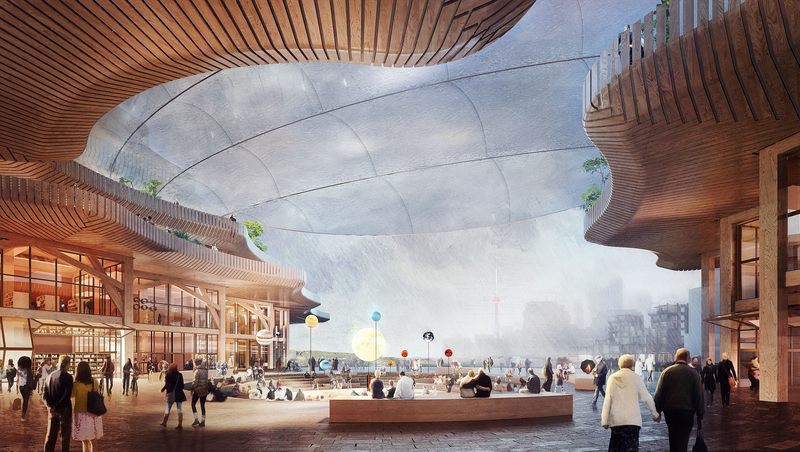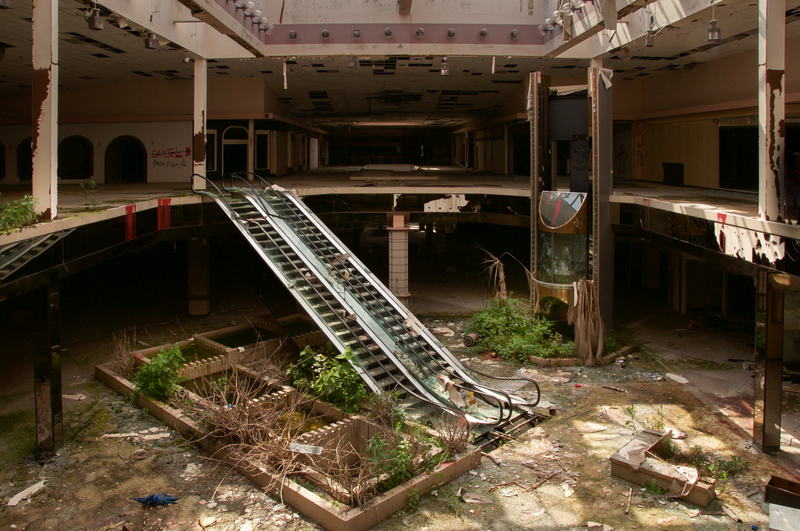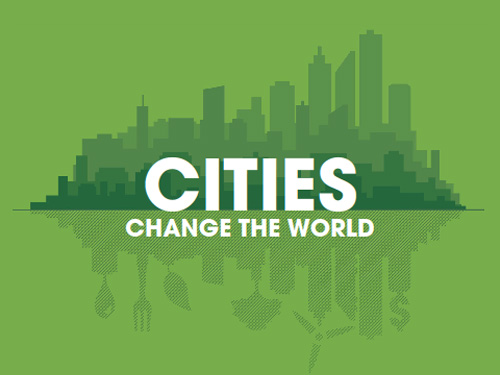From the “car-oriented city” to the “sustainable city”, and now the “smart city”: recent urban history shows us that technological progress and homogenous social demands have had a great impact on the creation of urban models. What if the future of western cities will depend more on individualistic and consumption-based trends?
Urban development is the result of a series of opportune adaptations to circumstance. The history of cities shows that four families of factors1 have often driven their transformations:
- specific constraints (ecological, sanitary, economic or political) that have caused a paradigm shift
- new technologies (concrete, lifts, trains, cars, etc.)
- marked changes in aspirations and lifestyles
- a new system of actors, bringing together political actors (the State, local authorities), dominant economic actors, and citizens/ city-dwellers.
The car-oriented planning that dominated the second half of the twentieth century effectively illustrates this process. It was admittedly motivated by the spread of a major technological tool (the car) but it also struck a chord with rising individualist and consumerist aspirations (the consumer society), the influence of dominant economic actors (road and oil lobbies, retail) and the relative inaction of local and national authorities in response to these private actors. The consequence of this process was urban sprawl, which gradually made car use indispensable for most of the population. It also helped turn citizens into “consumers of services”2. Once involved daily in the life of a compact city that provided them with work, social bonds and acknowledgement, they began living their different lives in several less and less connected spaces. This conjunction of factors was so powerful in the late 1990s that nothing seemed able to stop western urban models aligning with the North American standard, which David Mangin dubbed la ville franchisée: the franchised city3. From 1995-2000 onwards, a response began to emerge focusing on the “sustainable city” paradigm, seeking to counter the main forces driving car-oriented cities. Local bodies reasserted their authority, in most European countries but also in certain North American cities, rolling out multiple initiatives and technological innovations designed to restrict car use and reclaim city centres. They were supported by citizens who were aware of the environmental limitations of the car-oriented city and wanted to live differently. In many European countries, governments have supported this urban empowerment movement with institutional reforms. In the early 2000s, many planning professionals thought that the sustainable city, embodied by the first eco-districts, could assert itself as an alternative to the car-oriented city. The dream of the city of 2050 was all about bikes, trams, cable cars and “third places” buzzing with social innovations. From around 2010, this vision gradually lost its mobilising potential. Although the sustainable city scored points in city centres, it did nothing to solve the problems of suburbs. In parallel, budget constraints in the wake of the 2008 financial crisis led several states (including France and the UK) to reduce the funding of local authorities. Major digital actors also invited themselves to the table, proposing the new paradigm of the “smart city”, which brought a twofold promise. Not only would technology make it possible to solve the main failings of cities; it would also renew the democratic process by making communication between citizens and elected officials more transparent and fluid. The year 2017 heralded both the triumph of the “smart city” concept and growing doubts about those carrying it forward. The city of Toronto plans to let Sidewalk Labs4 develop a site of 13 hectares as a part of a 325 hectare project site on the shores of Lake Ontario. At the same time, the Facebook/Cambridge Analytica scandal has cast a lasting shadow over the supposed virtues of digital democracy. The smart concept, bereft of its political promise, appears here in a less flattering light: that of a mere “city of digital services” addressing consumers rather than citizens5. Several urban paradigms are in the running for designing the cities of 2050. We have not heard the last of the “old-style” car-oriented city, which is even supported by recent official positions on climate change in the US. The sustainable city continues to move forward, especially in northern Europe, where several cities have committed to becoming “zero carbon” by 2030. The smart city concept still has its appeal, promising to reconcile the car-oriented city with the sustainable city with tools such as self-driving cars (whose ecological benefit is far from being proven). In Asia, especially in China, the paradigm of a digital city under tight surveillance, closely controlled by state authorities, is starting to emerge. Finally, the poor, makeshift city, which is sometimes a source of low cost innovations, remains the standard model for several billion human beings. It should be added that different paradigms can coexist within the same urban agglomeration.
What will arise from this confrontation? To attempt to answer this, let us look again at the four main drivers of change.
- Ecological or geopolitical disasters will likely occur, but nothing allows us to state with certainty that they will have an immediate impact on mobility-related decisions and the organisation of urban systems. The argument of a “climate disaster foretold” has unfortunately shown its limitations, even as several American cities (New Orleans, New York) have been ravaged by climate-related phenomena.
- Digital technologies will clearly have many impacts on the way cities operate (modes of use, interactions between actors, behaviours) but, unlike the automobile, they seem unlikely to affect urban forms to a significant degree as Antoine Picon has shown us. They can be used to run driverless cars, self-service bikes, and driverless buses. The key fact, which has received insufficient consideration, is that technological progress has ceased to be mono-directional, and this applies to both energy and transport. While the car alone has dominated urban mobility over the last decades, the signs are that it will not be replaced by another single mode of transport, but instead by dozens of individual and collective solutions interconnected by physical and digital interfaces. Electricity to replace fossil fuel can be produced by multiple sources (solar, wind, biomass), which will eventually have to find their place in the urban environment.
- As far as changing social aspirations are concerned, we have to be circumspect when we consider the current demand for “civic empowerment”. Another groundswell, observed by sociologists, is the individualisation of expectations, which leads city-dwellers to behave like service consumers. The city of 2050 will also have to take into account the diversity of expectations, allowing for generational, cultural, social and ethnic variables that will be diffi cult to address en bloc. In actual fact, the same city-dweller might behave, according to the circumstances, as a demanding consumer or a generous-minded citizen. Civic Techs will not resolve this ambiguity; quite the contrary, in fact. They have shown that they can be used by turns to defend the general interest and the private interests of particular pressure groups.
- A new system of actions. Last but not least, the desire for civic engagement can be strongly activated (or discouraged) by the political offering. These different factors reveal a range of civic aspirations that is much more open than the “consumerist appetite” that drove the development of the car-oriented city.
Western cities in the 2050s will thus likely be determined less by technological factors and uniform social demands than in 1960-2000. More leeway will be given to interconnected actors. The future of cities will thus depend more on relationships of power and vision that will develop between political actors (states, local authorities), citizens, and key economic stakeholders. The latter are very likely to be the giants of the digital economy or their successors, who all take an active interest in “urban markets” (transport, housing, logistics, services). They support a vision of urban challenges that is far from coinciding with that of the traditional “political city”, run by an elected mayor and embodying a long term vision of public interest. What the smart city offers is a digitalised city of services, a real and virtual shopping mall responding in real time to the demands of users and controlled by algorithms. Confrontation between these two visions of the city is thus inevitable and is, in fact, already happening (see the recent standoff between London and Uber). Its outcome will partly depend on alliances set up between the two camps. Some states, like those in northern Europe, will most likely continue to reinforce the powers and competencies of their local authorities, which they see as essential intermediaries able to drive ecological transition. Others may, on the contrary, accept the principle of digital majors running their cities. The latter may possibly partner up with those who helped to create the car-oriented city, as shown in France by recent partnerships between Amazon and Casino and Google and Auchan. Whereas the second half of the twentieth century was marked by the undeniable convergence of western urban models, the next three decades will probably see deepening divergences. They will relate to systems of mobility, urban forms, relationships between actors, and the ultimate objectives of urban strategies (the “political city” or the “service city”). In, parallel, emerging countries will be spurred to invent their own models, in particular to cope with the arrival of two to three billion new urbanites. They will not necessarily use the same technologies as rich countries (e.g. China, with its 200 million electric scooters), they will not respond to the same aspirations, and relationships between stakeholders will doubtless be different, especially in the many countries where democracy will still be fragile or non-existent.
Jean Haëntjens, Economist and Urbanist, Urban Strategy Expert
1. Jean Haëntjens and Stéphanie Lemoine, Éco-urbanisme, Écosociété, 2015.
2. Olivier Piron, L’urbanisme de la vie privée, Éditions de L’Aube, 2015.
3. David Mangin, La ville franchisée, Éditions Parenthèses, 2003.
4. Company owned by Alphabet, just like Google.
5. See the January 2018 issue of Urbanisme magazine entitled “Qui gouvernera la smart city ?”.
6. Antoine Picon, La smart city. Théorie et critique d’un idéal auto-réalisateur, Éditions B2, 2015.


